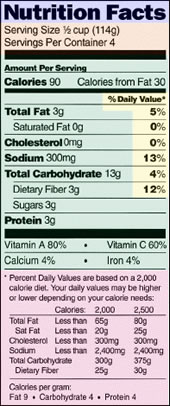This page has been archived and is being provided for reference purposes only. The page is no longer being updated, and therefore, links on the page may be invalid.
|
Labels Help Middle-Schoolers Choose Healthier Foods
By Alfredo FloresNovember 27, 2006
Middle-school-age children are capable of understanding food labels after an educational session, according to a recent study by a researcher at the Children's Nutrition Research Center (CNRC) in Houston, Texas.
The CNRC is operated by Baylor College of Medicine in cooperation with Texas Children's Hospital and the Agricultural Research Service (ARS), the U.S. Department of Agriculture's chief scientific research agency.
Many studies have looked at how informative food labels help adults and college-age youth select more healthful foods, but little's been done to see if improved understanding of label information could also aid middle-schoolers. according to Keli Hawthorne, a pediatric dietitian at CNRC.
During middle school, many children get their first chance to purchase food and make their own choices at the school cafeteria, Hawthorne notes. It's also the age group that has seen a doubling in obesity rates over the past two decades, thus further emphasizing the need for nutrition education strategies in this population.
Hawthorne wanted to see if a short, small-group educational program could improve middle-schoolers' interpretation of nutrition facts on food labels. Working with 34 Houston-area student volunteers aged 11 to 14, she gave them basic information on the use of nutrition labels and quizzed them on portion sizes and the nutrient contents of different foods.
The study's sample food labels included foods such as cookies, yogurt, pizza, and potato chips—all products that middle school children are very familiar with. For example, in studying potato chips, Hawthorne tested participants on their understanding of serving sizes of regular chips compared to lower-fat, baked chips by the same manufacturer. She also had them use package nutrition labels to compare the fat in a serving size of each.
Hawthorne found that children of this age range are able to understand how to interpret and use food labels to compare foods. The next step in this area of research would be to determine if using food labels leads to healthier food choices among middle-schoolers.
The study, which took place over six months in 2005, was published earlier this year in theJournal of the American Dietetic Association.

